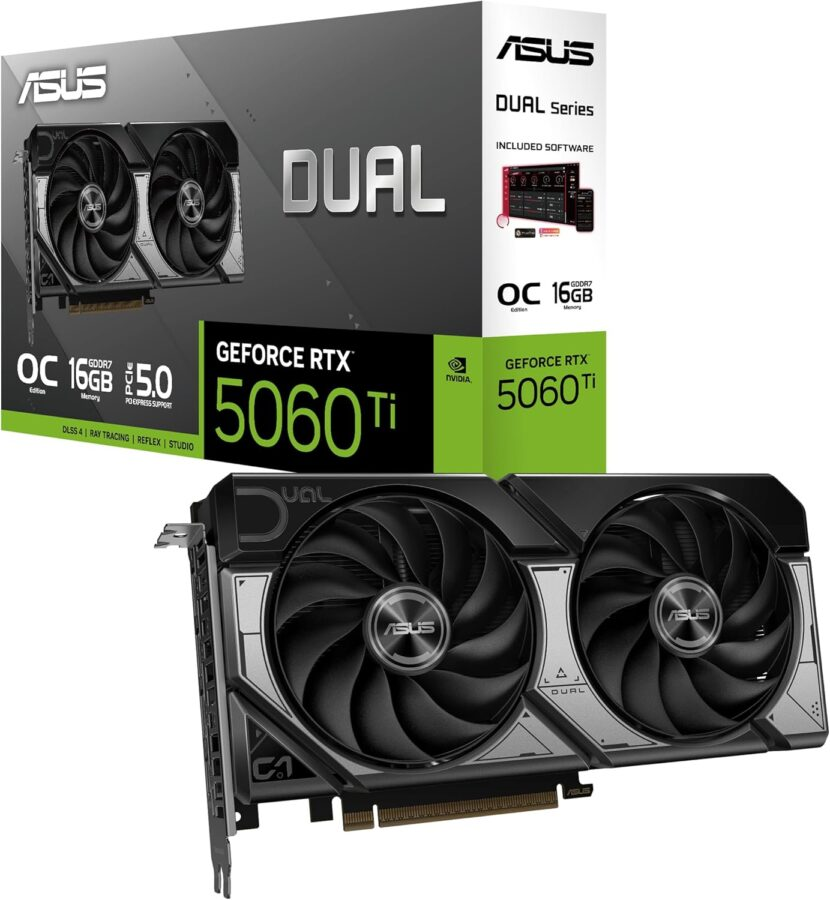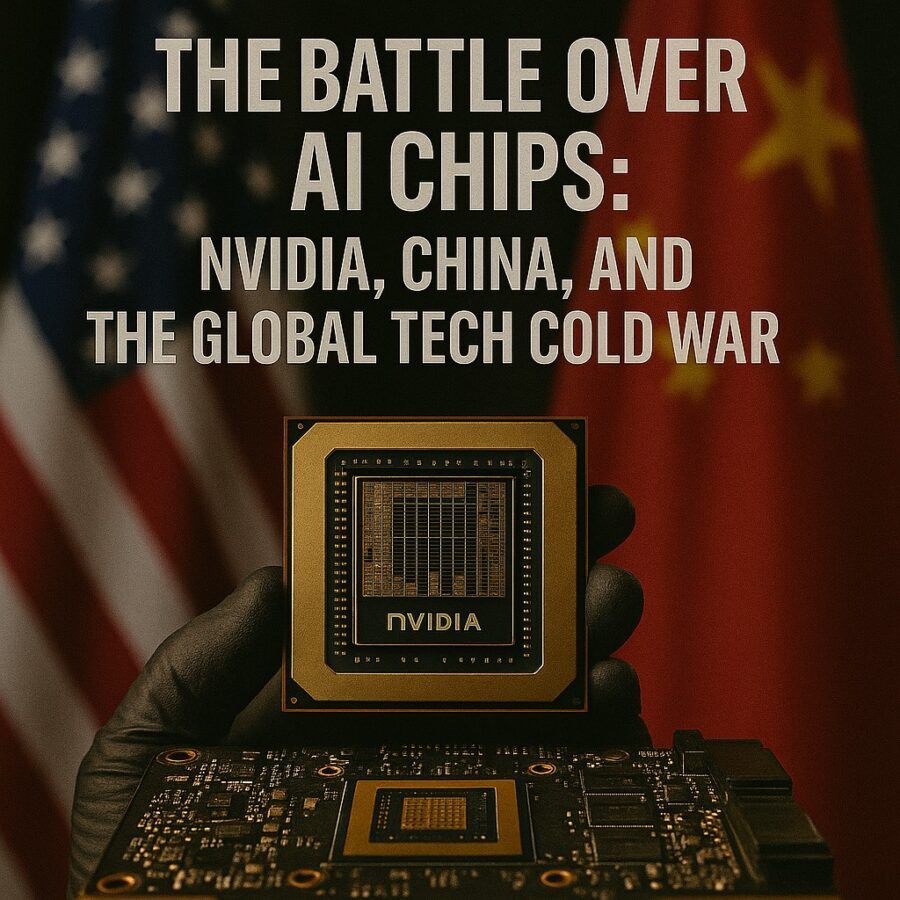Views: 2
The world’s most consequential technology fight right now is not over social media or search. It is over tiny pieces of silicon etched in laboratories and assembled across continents. The title of this conflict is simple: The Battle Over AI Chips Nvidia China. Chips that accelerate machine learning models are now strategic assets. They power cloud services, weapons research, industrial automation, and a race to field more capable artificial intelligence. The stakes are national, commercial, and moral. This article explains how the contest emerged, why Nvidia stands center stage, how China is responding, and what this global technology cold war means for supply chains, policy, and the future of compute.
Why the Battle Over AI Chips Nvidia China matters
GPUs and AI accelerators are not just faster processors. They are the factories that train large AI models and run inference at scale. Access to high-performance chips determines which companies can develop cutting edge models. Nations that control manufacturing, packaging, and memory components gain leverage over both commercial markets and defense capabilities. That is why the fight labeled The Battle Over AI Chips Nvidia China is not niche. It reshapes the balance of technological power between the United States and China, while forcing allies and partners to choose alignment strategies that affect trade, security, and research cooperation. (Congress.gov)
Nvidia: from graphics cards to geopolitical linchpin
Nvidia’s GPUs evolved from gaming gear to the dominant platform for AI training and inference. The company’s architectures and software ecosystem made its chips the go-to choice for cloud providers, startups, and research labs. Models from a few billion to hundreds of billions of parameters typically assume GPU clusters for training. Nvidia’s H100 and H20 families are thus strategic hardware, not mere products. The scale of demand turned Nvidia into a linchpin of the AI economy and a focus of export policy. (Gamers Nexus)
That dominance created vulnerability. If regulators restrict exports or markets close, the commercial and technical fallout would be wide. Governments took note and acted. The United States moved to restrict advanced GPU exports to limit China’s access to the most powerful AI compute. That policy decision elevated Nvidia from a market leader to a strategic actor in an international contest. (US Import Data)
A patchwork of export controls: U.S. policy in practice
Since 2022 the U.S. government has tightened rules on the export of top-end AI chips and related systems. The rules require licenses or prohibit exports of certain GPU models and entire systems incorporating them. Over 2023 to 2025 the controls expanded to include inference chips, packaging technologies, and even third-country transshipments meant to circumvent direct bans. The policy intent is to limit China’s ability to field advanced AI systems that could be used for military or surveillance objectives. That regulatory architecture is a core part of The Battle Over AI Chips Nvidia China. (Congress.gov)
Export controls are complex. They try to strangle the flow of the most capable hardware to China while permitting less powerful chips to move under license. That distinction produced a market for China-specific designs and galvanized efforts to develop domestic alternatives. But controls also spawned smuggling networks and legal cases as actors sought to move hardware covertly across borders. Arrests and prosecutions of illegal shipments have underscored how porous enforcement can be. (Al Jazeera)
China’s response: accelerate domestic champions
Beijing reacted in multiple ways. It tightened scrutiny of foreign purchases and launched industrial plans to accelerate domestic chip makers. State-backed firms and private champions such as Huawei, Baidu, Alibaba, and Tsinghua-affiliated startups accelerated work on domestic accelerators like Huawei’s Ascend family. Beijing also invested in foundries, packaging, and memory capabilities to close the gap. The result is a clearer Chinese roadmap for substitutes that are meant to blunt the impact of foreign restrictions. (AP News)
Huawei’s announced Ascend roadmap and supercluster ambitions are a signal. The company unveiled a multi-year plan for Ascend chips and larger-scale systems meant to rival Western solutions. In parallel, Chinese foundries and memory makers expanded capacity, acknowledging that advanced packaging and high bandwidth memory are bottlenecks that matter as much as the compute die itself. Those bottlenecks remain technical and capital intensive. But the political will and funding to bridge them are substantial. (Tom’s Hardware)
A market pushed to bifurcation: China-centric chips and alternative supply chains
One immediate consequence of The Battle Over AI Chips Nvidia China is market bifurcation. Western suppliers who must obey U.S. rules focus on markets they can serve. Chinese customers and cloud providers accelerate procurement of compliant variants, used chips, and domestic accelerators. Meanwhile, black market channels and third-country transits emerged. Governments respond with new global licensing regimes designed to prevent third parties from being used as transit hubs. That dynamic raises costs and friction for global enterprises. (Los Angeles Times)
For cloud operators and hyperscalers, this split means decisions about where to deploy model training, how to source hardware, and whether to partner with local vendors. Businesses now must manage compliance risks while preserving developer agility. The costs of doing nothing are high. Delays in chip availability hinder new model development and raise prices for compute-intensive services. (Network World)

MSI Gaming GeForce RTX 3060 12GB 15 Gbps GDRR6 192-Bit HDMI/DP PCIe 4 Torx Twin Fan Ampere OC Graphics Card
Bottlenecks that shape outcomes: nodes, memory, and packaging
A recurring technical theme in the conflict is that compute dies are only part of the story. Advanced nodes, high bandwidth memory (HBM), and sophisticated packaging like CoWoS determine performance at scale. China faces shortages in reliable HBM supply and the most advanced packaging techniques because those parts of the stack remain concentrated in a handful of global firms. Without access to co-packaged HBM and advanced interconnects, domestically produced accelerators struggle to match Western performance on large models. That reality constrains how quickly China can fully replicate Nvidia-class systems. (SemiAnalysis)
Nevertheless, the gap is closing in specific areas. Incremental improvements and clever system architectures allow local companies to deliver viable alternatives for many commercial use cases. For national security and cutting-edge training workloads, however, the premium on the top-end hardware remains a decisive factor. (South China Morning Post)
Corporate fallout: Nvidia, revenues, and the calculus of compliance
Business implications for Nvidia are immediate and painful. China has long been a major market for GPU sales. Export restrictions and retaliatory measures from Beijing reduced access and introduced uncertainty. At times the Chinese authorities also investigated or restricted specific Nvidia lines, prompting cancellations and order freezes. The practical effect was material revenue disruption and a need for Nvidia to navigate two powerful governments’ demands at once. Nvidia’s leadership publicly acknowledged the difficulty of balancing regulatory regimes while serving global demand. (Reuters)
Analysts estimate billions of dollars in lost sales when China is partially or wholly inaccessible. Yet the political price of flouting export rules is higher still, including legal exposure and reputational risk. The company’s strategy shifted toward designing China-specific variants in some cases, while also working with U.S. regulators to clarify licenses. That compromise approach is one piece of how firms try to survive amid The Battle Over AI Chips Nvidia China. (Z2Data)
Smuggling and enforcement: when policy meets demand
Restrictions created a market for illegal shipments and creative workarounds. U.S. authorities pursued cases against individuals and networks that attempted to export high-end GPUs to China without licenses. These prosecutions signaled seriousness but exposed enforcement challenges. Supply chains are vast and global. A few interdictions will not end a determined smuggling economy where economic incentives are high and enforcement resources are finite. The existence of such networks underlines the tension between policy intent and practical control. (THE DECODER)
At the same time, governments moved beyond export bans to include controls on related equipment and third-country routing. That more ambitious framing aims to tighten the net, but it also complicates legal commerce across Asia, Europe, and other regions. Companies that previously relied on fluid regional flows now must build compliance engines and transparency mechanisms. (Congress.gov)
The geopolitics of allies and split ecosystems
The United States’ approach expects partners to play along. When export regimes broadened to third countries, Washington sought buy-in from allies and Indo-Pacific partners. That diplomatic task is tricky. Some countries welcome decoupling from China; others prize market access and fear economic blowback. This is the diplomatic tension at the heart of The Battle Over AI Chips Nvidia China. The outcome will determine whether the world organizes into separate compute ecosystems or manages to preserve open research collaborations. (Texas National Security Review)
The risk of bifurcation goes beyond hardware. Software tooling, model availability, and talent flows could follow. If researchers in one bloc cannot access the same accelerators or model checkpoints, scientific progress and industry innovation may slow in unpredictable ways. Some warn that splitting the AI ecosystem will reduce efficiency and slow global problem solving. Others see decoupling as necessary to manage strategic risks. These are not purely technical arguments. They rest on national choices about what represents acceptable security risk. (Brookings)
Military and security dimensions
AI compute powers capabilities that matter to national defense, from signal processing to automated analysis. Many of the export controls reference the risk that advanced chips could accelerate military AI applications. For defense planners, the logic of restricting access is straightforward. For technologists, the consequence is a new architecture of competition where compute parity can alter strategic calculations. If one side achieves sustained advantage in training large models or deploying real-time inference at scale, that advantage can cascade into surveillance, targeting, and decision support systems. That is why The Battle Over AI Chips Nvidia China has immediate resonance in national security circles. (Congress.gov)
Economic second-order effects: investment, reshoring, and new winners
The export control regime spurred new investments. Western governments and companies accelerated reshoring or friendly-sourcing initiatives. Taiwan, Korea, and Japan enhanced their roles in foundry and packaging ecosystems. In China, state-directed capital flowed to domestic firms to close gaps. Investors searched for companies that could replace or augment Western suppliers. The net effect is a reallocation of capital toward semiconductor independence and resilient supply chains. That change will take years and may produce new regional winners who can deliver alternatives at scale. (AInvest)
For consumers and enterprises, these shifts can raise prices and slow product cycles in the short term. For long-term technological sovereignty, they may produce greater diversity in sources of compute. Both outcomes are part of the tradeoffs implied by The Battle Over AI Chips Nvidia China. (Network World)
China’s closing-in strategy: build the stack, not just the chip
Beijing’s plan recognizes that competitiveness requires end-to-end capabilities. That means investment in:
- Domestic fabs that can approach leading-node densities.
- Memory manufacturers that can produce HBM at scale.
- Advanced packaging and interconnect technologies.
- Software stacks and developer ecosystems that mirror CUDA and other toolchains.
China’s announcements and product roadmaps show a clear intention to pursue this whole-stack approach rather than rely on component imports alone. The short term will be limited by physics and capital. The medium term will be shaped by execution, talent retention, and global cooperation choices. (AP News)
Will China match Nvidia’s performance? Technical realism
Technically it is possible for China to build competitive accelerators. Doing so at scale and within timeframes that matter for national strategy is the real challenge. Sources note that without reliable HBM and advanced packaging the performance of new chips will lag top-tier Western alternatives for large-model training. But for many practical AI tasks, clever system architecture and abundant numbers can compensate. So while parity on the bleeding edge may lag, capability in most enterprise contexts can improve rapidly. This pragmatic middle ground shapes the trajectory of The Battle Over AI Chips Nvidia China. (SemiAnalysis)
The policy debate: restrict, engage, or regulate?
Policymakers are split. Some argue tighter controls are the only option to prevent strategic competitors from acquiring asymmetric advantage. Others warn that overreach will undermine U.S. leadership in semiconductors by alienating partners and slowing commercial innovation. Economists point out that controls may have unintended consequences: they can accelerate domestic substitution abroad and create opportunities for nonaligned firms. The debate over whether to prioritize security or openness is central to The Battle Over AI Chips Nvidia China. (Brookings)
Layered into that debate are corporate concerns. Companies want clear, predictable rules that allow them to plan investments without being forced into political choices overnight. For nations, the calculus includes workforce development, alliance politics, industrial policy, and export law. This is where geopolitics and microelectronics meet in a complex way. (Z2Data)
Scenarios for the next five years
We can envision several plausible futures.
- Managed bifurcation. Major powers maintain separate but interoperable spheres. Firms operate in both with distinct product lines. Innovation continues, but duplication increases.
- Rapid Chinese catch-up. China narrows the most important gaps through industrial policy and domestic innovation. Global compute markets fragment more quickly.
- Sustained Western dominance. Export controls, allied cooperation, and constant innovation prevent China from catching up on top-end training hardware for a long time.
- Hybrid cooperation. Governments craft narrow, enforceable rules that limit dual-use risk while preserving some research cooperation. This is politically hard but offers economic gains.
Which path unfolds will depend on policy choices, corporate execution, and raw engineering difficulty. The one certainty is that The Battle Over AI Chips Nvidia China will continue to define technology and security strategies worldwide. (Texas National Security Review)
What people building products need to do today
Companies that build AI products must plan for friction. Practical steps include:
- Design models that can run on a range of hardware, including domestically sourced accelerators.
- Prioritize portability of model weights and abstraction of hardware dependencies.
- Build compliance and auditing into procurement workflows.
- Prepare for higher compute costs and plan model training budgets accordingly.
- Consider hybrid strategies using public cloud, regional partners, and on-premise clusters.
Those operational choices will reduce the vulnerability of businesses to geopolitical shocks. They will also determine who can continue innovating when supply constrictions tighten. (Network World)
The ethical and human dimension
Beyond national security and corporate strategy are human consequences. AI can be used for policing, surveillance, and influence operations. The speed at which compute becomes available influences the pace at which such systems can be developed and deployed. The ethical debate about who should have access to capabilities that affect privacy and civic life sits at the heart of The Battle Over AI Chips Nvidia China. Societies must weigh technological benefits against civil liberties. That balancing act will shape regulation and public trust for years to come. (Brookings)
Conclusion: chips, choices, and the long game
The fight over semiconductors is about more than companies. It is about control over a capability that will shape commerce, security, and daily life. The Battle Over AI Chips Nvidia China is a story of market power, national strategy, and technical bottlenecks. It is a contest driven by silicon, supply chains, and statecraft.
We are far from a single winner. Nvidia remains indispensable while policy and market shifts force new adaptation. China is mobilizing resources to close gaps from node technologies to software stacks. Allies face hard choices about alignment. The practical consequence is greater complexity and a need for robust strategies by firms and governments alike.
In the end, the contest will be won not by a single chip maker but by those who build resilient supply chains, trusted governance, and tools that safely democratize powerful compute. For policymakers and builders, the task is not merely to secure chips but to secure the human and ethical frameworks that guide how this compute is used.
Selected sources and further reading
- U.S. government briefing and CRS analysis on export controls and semiconductor policy. (Congress.gov)
- Reporting on Chinese directives and industry reaction, including Reuters and Financial Times coverage of purchase bans and domestic roadmaps. (Reuters)
- Analysis of Huawei’s Ascend roadmap and China’s HBM and packaging bottlenecks. (Tom’s Hardware)
- Coverage of illicit shipments and legal enforcement actions related to GPU smuggling. (THE DECODER)
- Think pieces on export control policy tradeoffs from Brookings and other policy institutes. (Brookings)



](https://altpenguin.com/wp-content/uploads/2025/08/veed-ad.webp)


